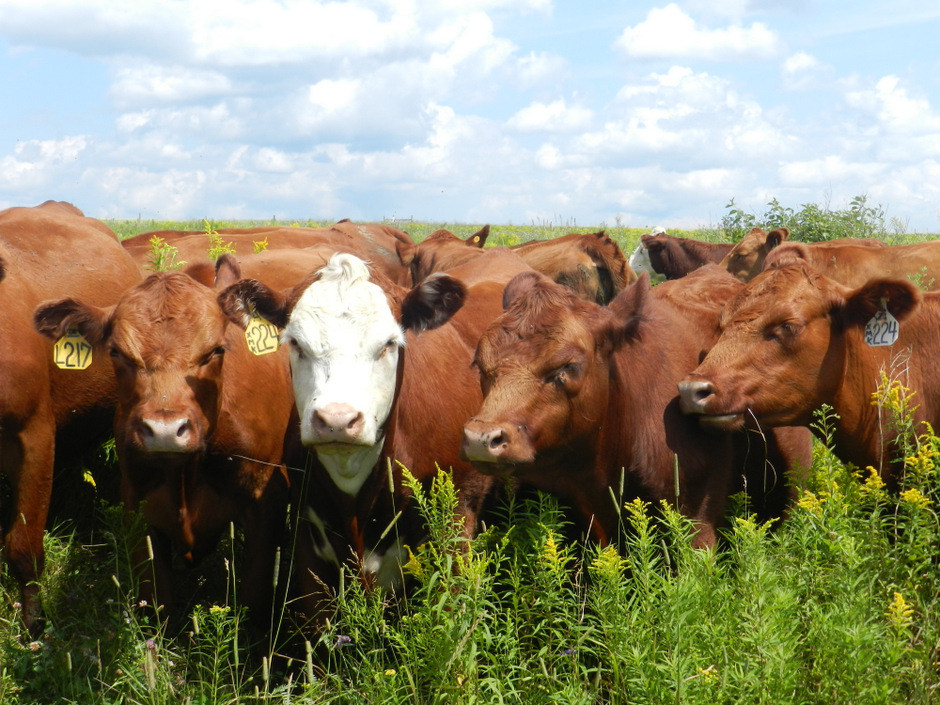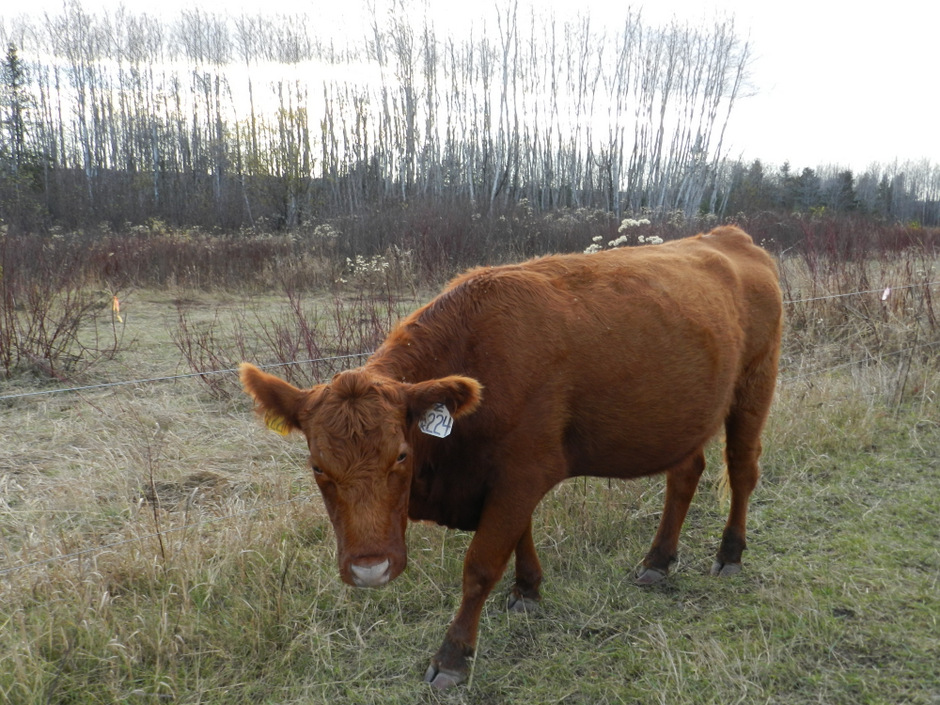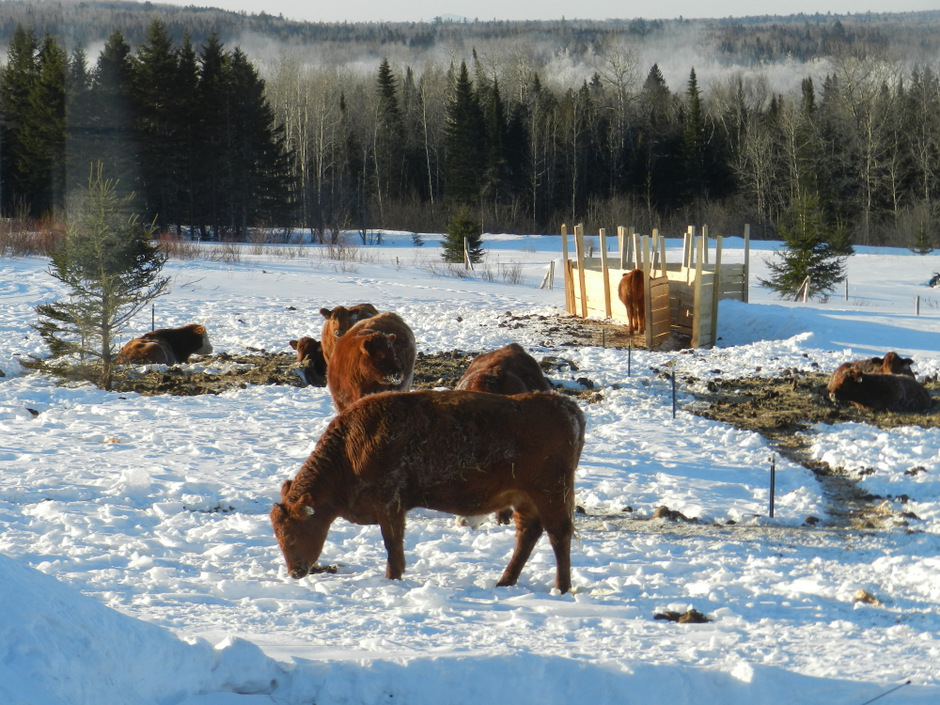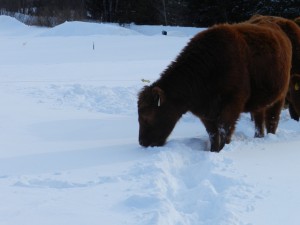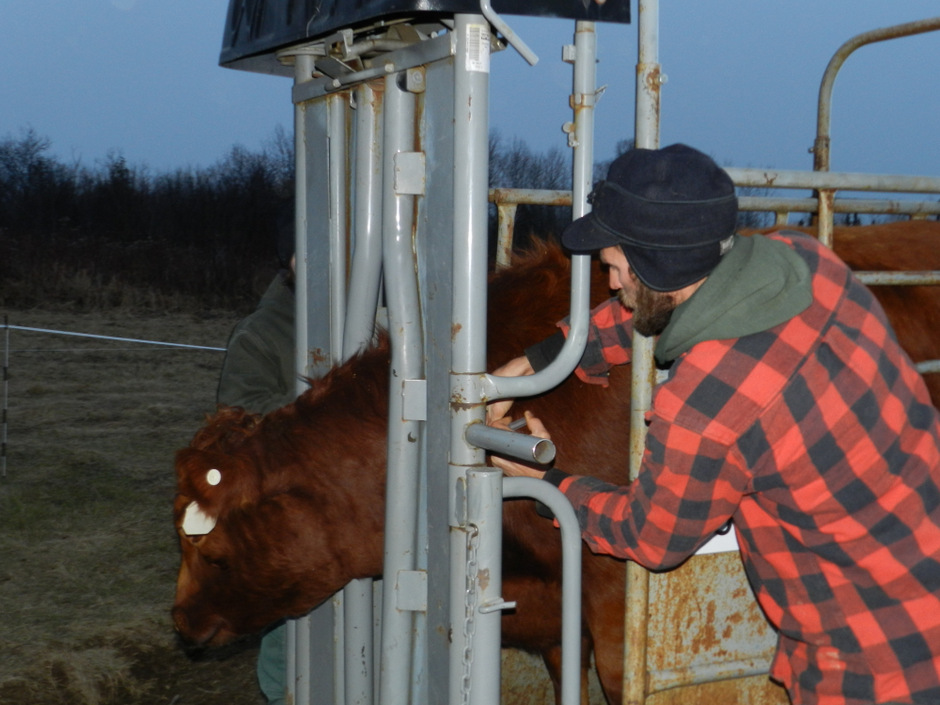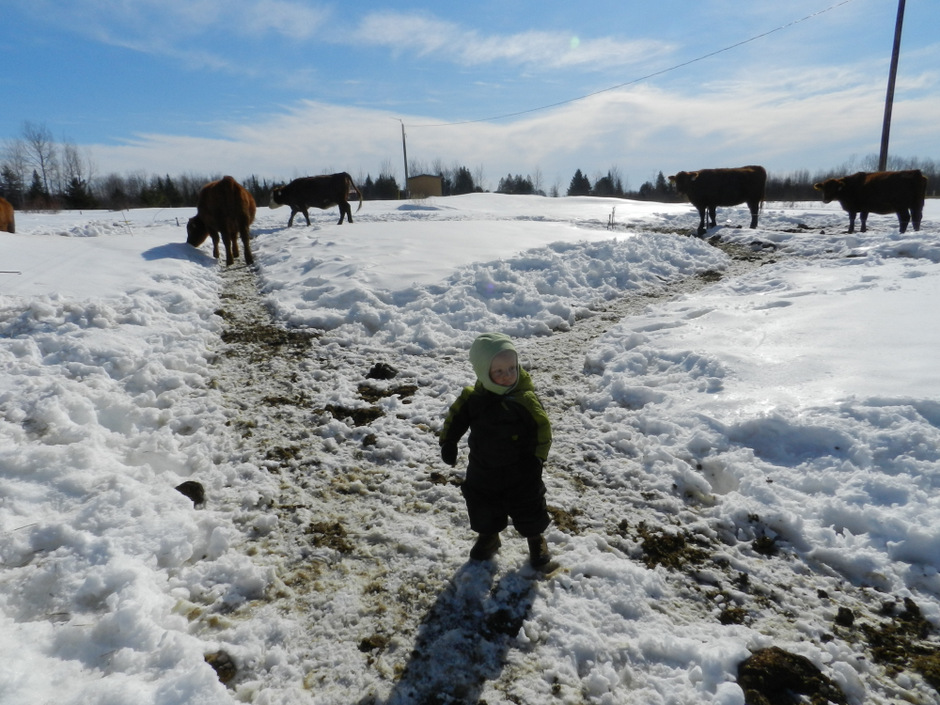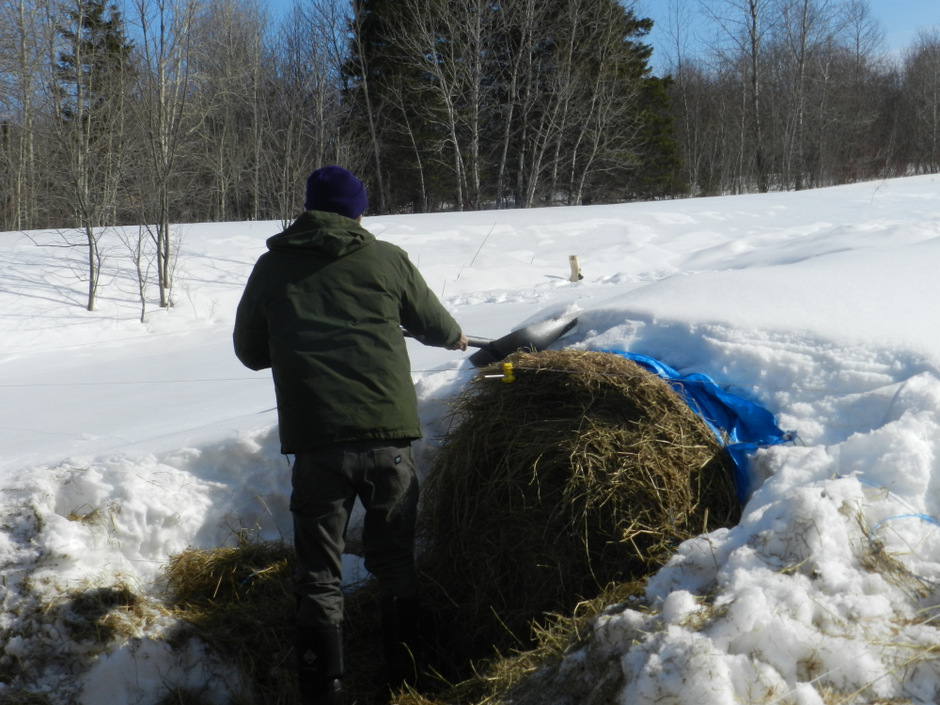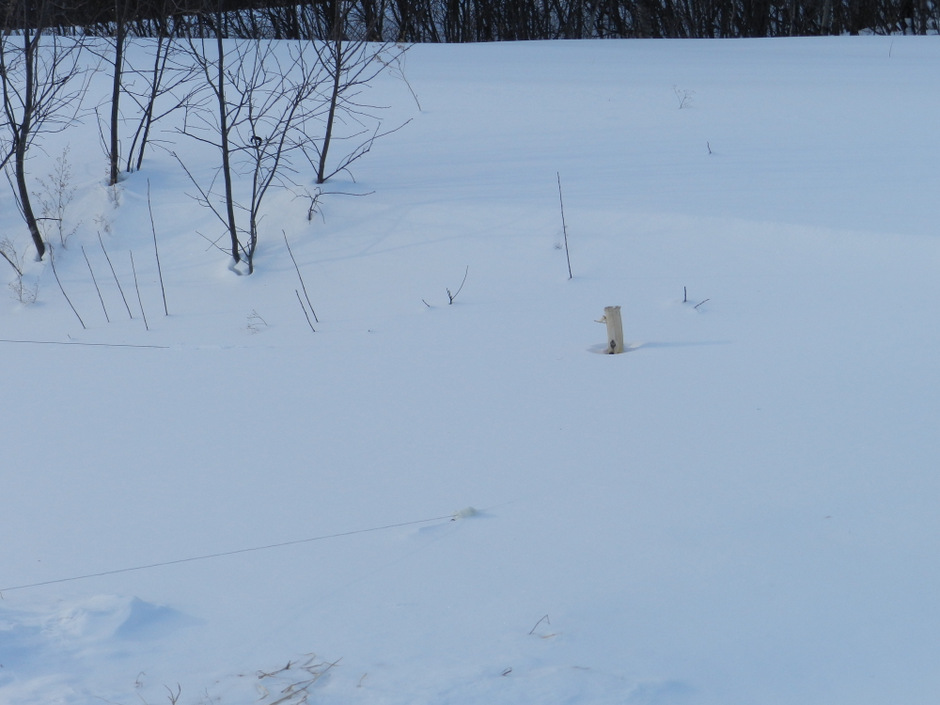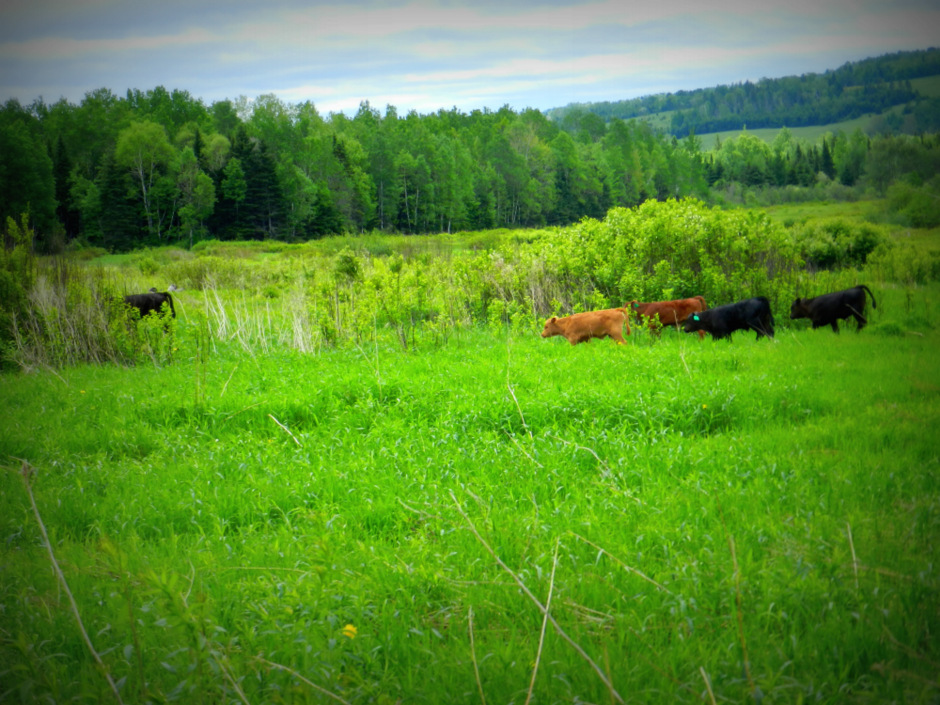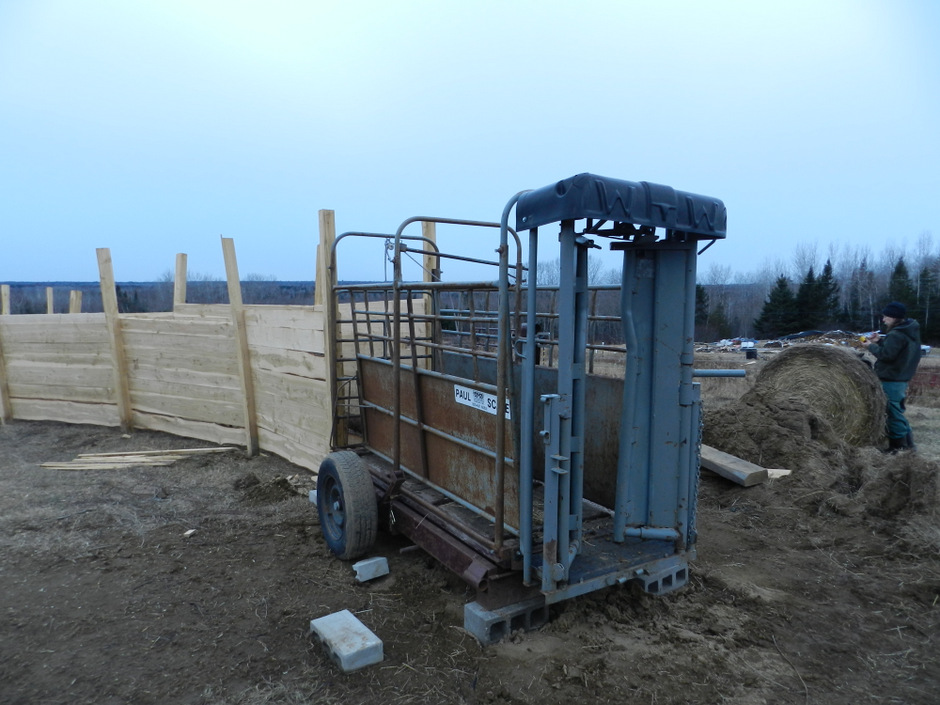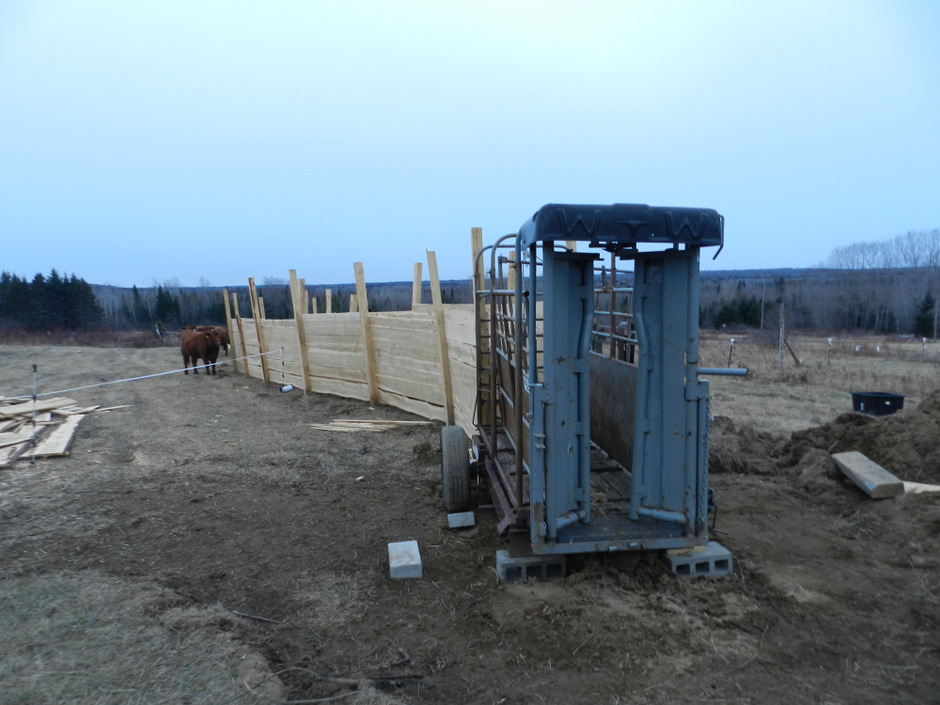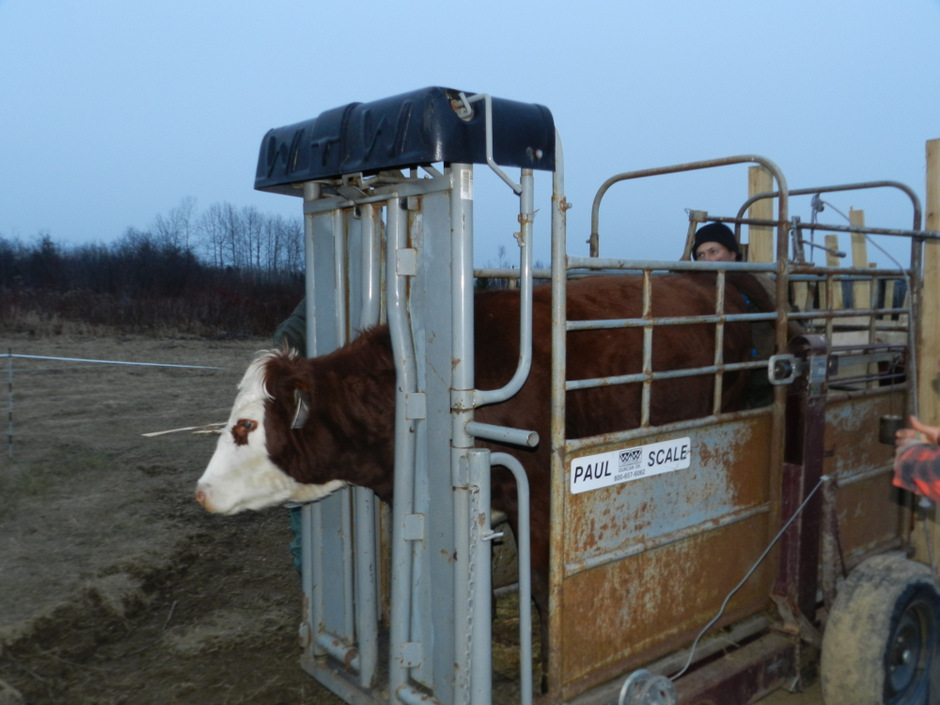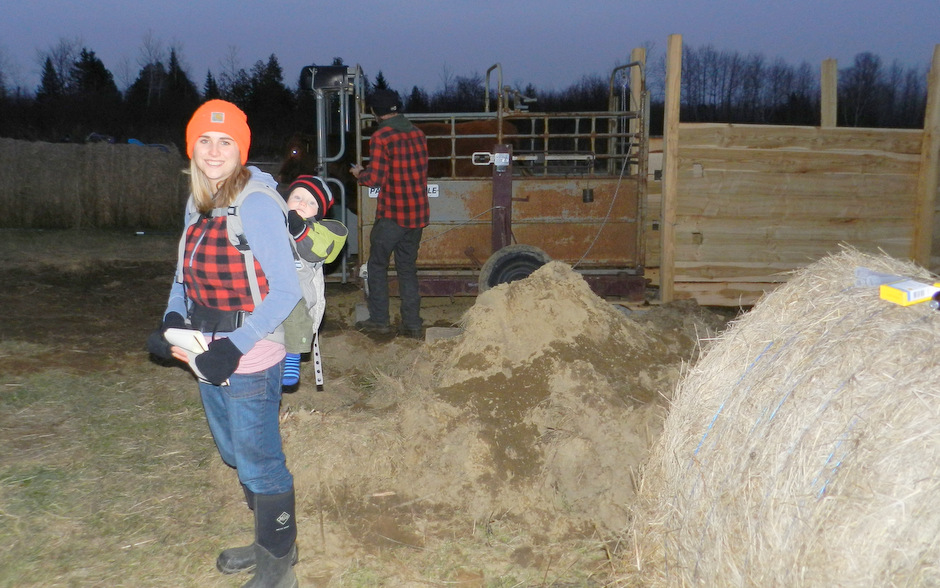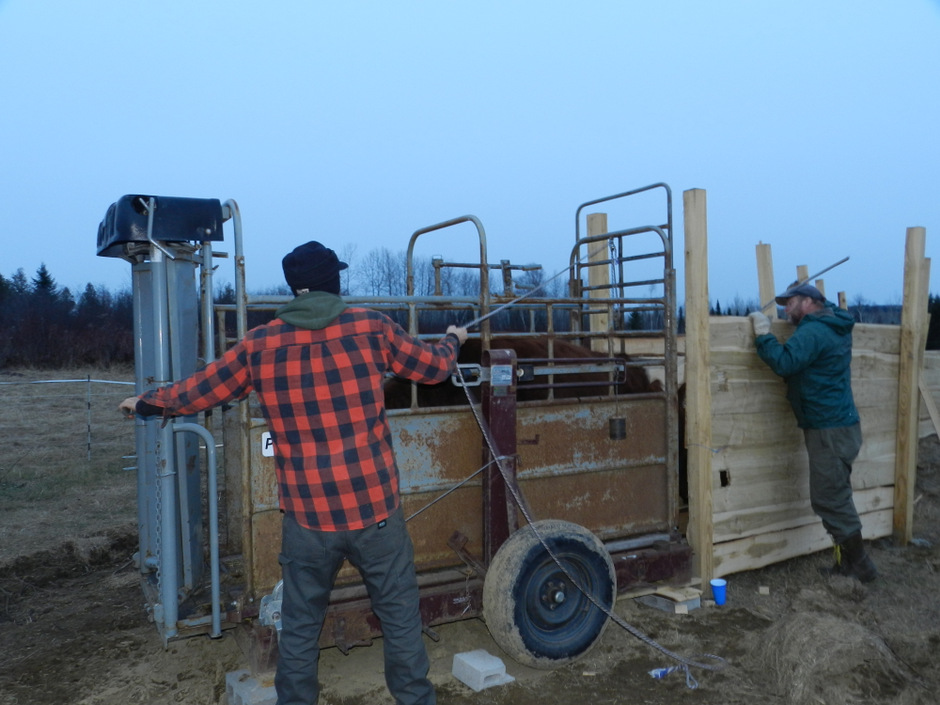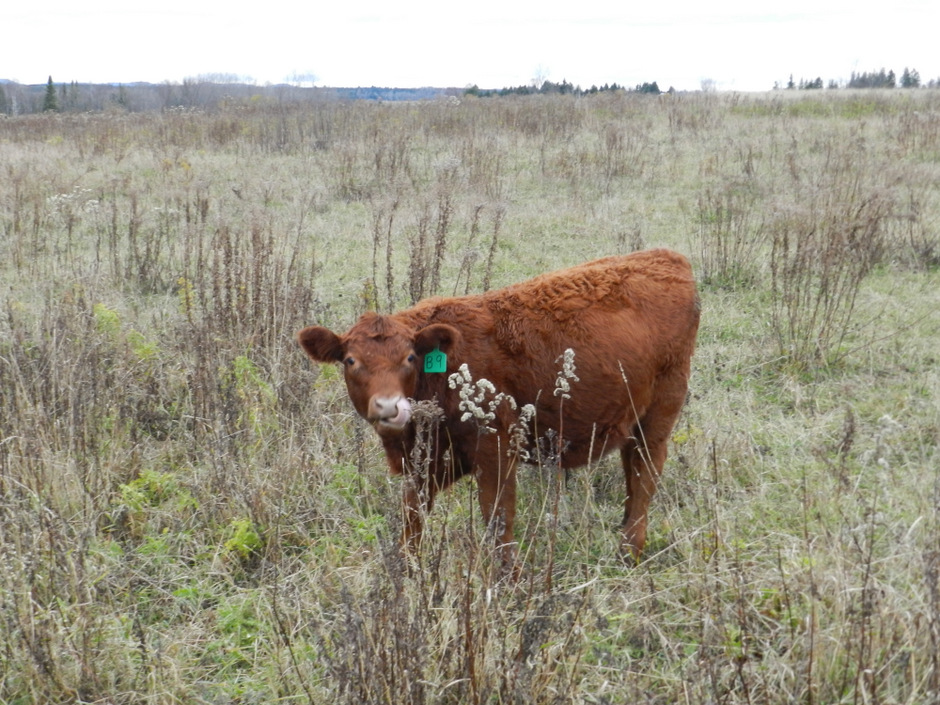

Today’s post will focus on vaccinating your calves. Stay posted for our next post on weaning your calves.
As I am typing, we are just a week away from Christmas and winter has arrived on the Wood Farm. Normally, having lots of snow in mid-December is nothing out of the ordinary in our neck of the woods.
This winter, though, our farm underwent a winter wonderland on the evening of November 1st. Yes, November not December.
I think Mother Nature got her months mixed up.
Last year, our cows grazed on pasture up until the first day in December and we had hoped to have the same fall-time grazing success this year. We had to start our cows on hay bale grazing on November 8th.

All of our grand ideas of stretching out our fall grazing and thus, our winter hay bale supply (save $30/day) flew out the window into swirls and swirls of snowflakes. Oh well, that’s how it goes with farming. I strongly believe that having a flexible attitude with large doses of patience and positivity can take you very far in this crazy, wonderful world of beef cattle farming!
Getting back to the focus of this post (vaccinating your calves), though, we had no clue that winter would come a month early. On that wintery day, as we watched the first snow of the season fall and pile up all around us, we felt so fortunate that the two very critical tasks to have done before winter – vaccinating and weaning calves – were done. We vaccinated our calves on September 21st and weaned them October 4th (Post on weaning coming soon).
Vaccinating Calves

We chose to vaccinate our calves a few weeks before we weaned them. These calves had not yet been worked through an alley, chute and head gate and just going through that maze had the potential to be a slightly stressful event for them. We had no desire to couple that process with weaning.
After consulting with our veterinarian, we decided to do the vaccinations ourselves. Unfortunately, I do not have any pictures from this as it proved to be a very high-energy event. The whole process took eight hours to complete, and I wore our 30lb son in the backpack for half that time.
September 21st was the big day. We had 10 Angus calves to vaccinate, ranging in age from 2 1/2 – 5 months old. Jer and I worked these calves by ourselves and boy, did we learn some important lessons. Lessons on what NOT to do but at the same time, some affirmation that parts of our process were working. I just can’t stress enough how important it is to remain calm, patient and positive when handling cattle, especially these young calves. If you are getting upset and impatient, you better believe that calf is fielding those emotions from you and you are going to have a fight on your hands getting that animal down an alleyway and into a head gate.
We administered the following vaccinations to each of our 10 calves:
- 2ml of 20/20 Vision 7 with spur (pinkeye). Given subcutaneously in the upper neck.
- 2ml of Presponse HM (prevention of bacterial pneumonia). Given intramuscular in the upper neck.
- 2ml of Bovi-Shield Gold 5 (for a range of respiratory diseases). Given subcutaneously in the upper neck.
- 3ml Multimin90 (mineral supplement). Given subcutaneously in the upper neck.
- 16ml of Ivermectin Pour on (wormer). Applied along the top line.
In addition to the vaccinations, we were able to get weights on nine of the calves. We had been pleased with the calves’ performance and growth over the summer and the weights provided us with some much-needed affirmation that we were well on track to have 500+ pound calves for sell in November.
When we finished up that night, we came inside and over dinner, we brainstormed ideas for making the whole vaccination process more effective, streamlined and calmer for both human and animal. We talked about what went wrong and what went right. The day was not perfect. We always try not to let our emotions get the best of us when working with our animals but we stumbled a bit that day. In the end, though, we always try to remind ourselves that at least we have cattle; yes, we sometimes get frustrated and impatient but at least we have cattle. Could be a lot worse. We could not have cattle and we just couldn’t imagine life like that. 🙂
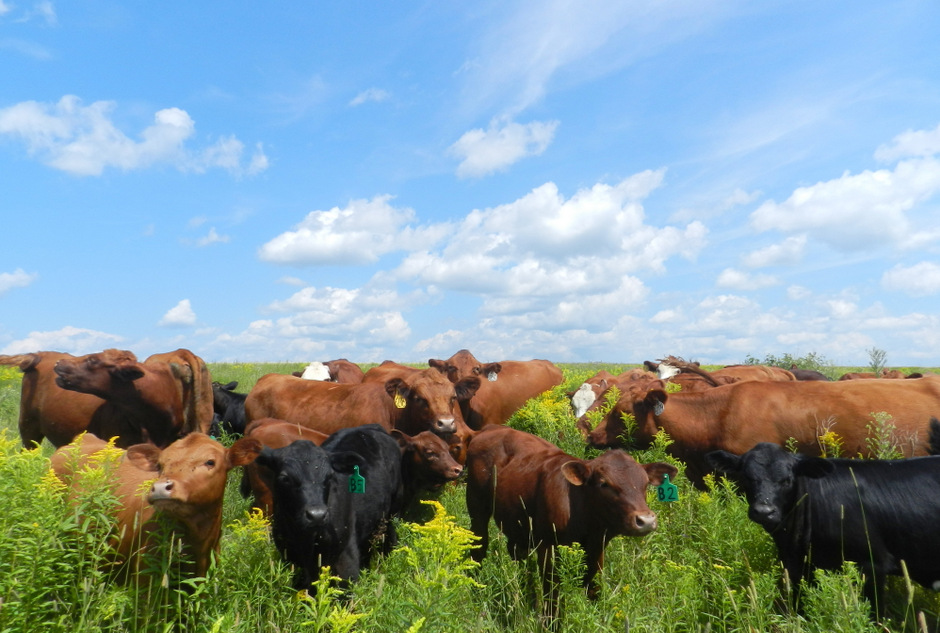
We could check vaccinating calves off our fall to-do list.
Next on the list? Weaning. What an adventure and yet another, learning lesson, that would turn out to be.
